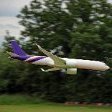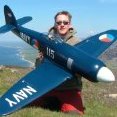The answers given by the BMFA and others look entirely reasonable and consistant with the way it has been for ever, can't see the issue myself, however, paying your own would solve what you see as a problem.
Pay yourself or via your club ? Swings and roundabouts for me. Our club ? Pay yourself if you want, or via the club, no drama either way.
Date on my doc ? Couldn't care less, The BMFA tells me I'm insured from when I pay my club, they know their job, good enough for me.



